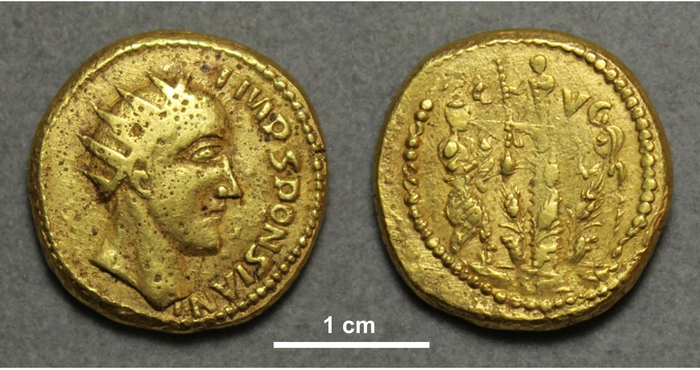A new study reveals that several Roman coins discovered in 1713, which were previously believed to be fake, are actually authentic - highlighting the evidence that the ruler depicted on one of the coins was in fact, in power during the 260s CE.

(Photo : Pearson et al., 2022, PLOS ONE, CC-BY 4)
The researchers propose that "Sponsian" was an army commander in the Roman Province of Dacia at a time of armed conflict in the 260s CE by taking into account historical records as well as the fresh evidence from authenticating old Roman coins. These coins were previously thought to be forgeries but a new study claims otherwise.
Ancient Roman Emperor
Roman mints produced coins with images of the reigning emperors during the majority of ancient Roman history. While there are no other historical records indicating a Roman emperor named "Sponsian" ever existed, a series of such coins with some of them bearing portraits labeled with the name Sponsian was found in Transylvania in 1713.
The Transylvanian coins generally resemble Roman coins from the middle of the third century, but they also differ in several artistic elements and in the way they were made, which has led many experts to consider them as forgeries made to be sold to collectors.
Furthermore, "Sponsian" was not yet recognized as a name that had ever existed in classical Rome in 1713. Hence, these coins were initially believed to be forgeries.
The research examined the physical traits of four of the coins, including the Sponsian coin, in greater detail to prove the legitimacy of the Transylvanian coins.
They examined the four coins together with two unquestionably genuine Roman gold coins for comparison using visible light microscopy, ultraviolet imaging, reflection mode Fourier transform infrared spectroscopy, and electron microscopy.
Read Also: Archaeologists Discover Signs of Ancient Human Civilization in the Depths of Lake Constance
Authenticating the Old Coins
Deep micro-abrasion patterns were discovered in the analysis, which are normally found on coins that have been in use for a long time.
The analysis of clay deposits on the coins by the researchers revealed proof that they had been extensively circulated, buried for a long time, and then unearthed. They claim that the new evidence points to the coins' authenticity.
The researchers propose that Sponsian was an army commander in the Roman Province of Dacia at a time of armed conflict in the 260s CE by taking into account the historical record as well as the fresh evidence from the coins.
"Scientific analysis of these ultra-rare coins rescues the emperor Sponsian from obscurity. Our evidence suggests he ruled Roman Dacia, an isolated gold mining outpost, at a time when the empire was beset by civil wars and the borderlands were overrun by plundering invaders," lead author, Paul N. Pearson of University College, London, said in a press release statement.
Related Article: Archaeologists Unearth Hundreds of Mummies on the Pyramid of a Mysterious Queen in Egypt
This article is owned by Tech Times
Written by Jace Dela Cruz





